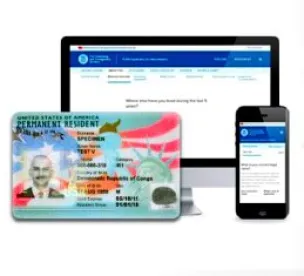Since 2011, government processing of green card applications has taken longer and longer. Concerns expressed by lawmakers, immigration advocates, and the public prompted Senator and Ranking Member of the Senate Committee on Homeland Security and Governmental Affairs Claire McCaskill (D-MO) in late-2016 to ask the Office of Inspector General (OIG) of the DHS to review these green card processing timelines. USCIS, the agency with oversight for reviewing green card applications, aims to adjudicate green card applications within 120 days. That goal was not being met.
The OIG’s March 2018 report found:
- The information about green card processing times on the USCIS website was unclear and unhelpful to applicants—especially because the “Processing Cases As of Date” was not the receipt date of the application (although most applicants would have assumed that); and
- USCIS was far from meeting its 120-day goal (the average processing time was at least 240 days), and the 120-day goal was unrealistic.
The OIG recommended that USCIS:
- Change the way it presents information on its website to more clearly reflect wait times; and
- Determine a more realistic processing goal.
USCIS concurred with the OIG, responding that it is hampered in meeting the 120-day goal by, among other things:
- Lack of experienced staff;
- Lack of funding for more overtime;
- The time it takes external agencies to process security and background checks; and
- The time necessary to thoroughly vet applicants, including the issuance of Requests for Evidence (RFEs) and Notices of Intent to Deny (NOIDs).
Further, USCIS said it:
- Is testing a new method of determining processing times;
- Will work toward posting processing time information within 1-2 weeks, rather than 6 weeks;
- Is working on redesigning its webpages to give applicants a clearer understanding of the true processing times; and
- Will conduct an analysis of processing times and respond with new goals by the end of 2018.
Some of the things that USCIS is already doing to address the problems:
- Released the new Form I-485, Application to Register Permanent Residence or Adjust Status, which it hopes will help eliminate some the RFEs that were slowing down the adjudication process; and
- Launched a pilot project to introduce new processing times to the website.
The pilot program is testing the following four forms using a new automated methodology for calculating processing times:
- N-400, Application for Naturalization;
- I-90, Application to Replace Permanent Resident Card;
- I-485, Application to Register Permanent Residence or Adjust Status; and
- I-751, Petition to Remove Conditions on Residence.
In the pilot program, the processing times are displayed based upon the actual receipt dates of the applications. The low end of the range shows the time it takes to complete 50 percent of the cases and the high end is the time it takes to complete 93 percent of the cases. Applicants will be able to make “outside of normal processing time” requests for any case that is beyond the 93 percent mark, USCIS said.
During this pilot phase, USCIS will seek further feedback.




 />i
/>i
